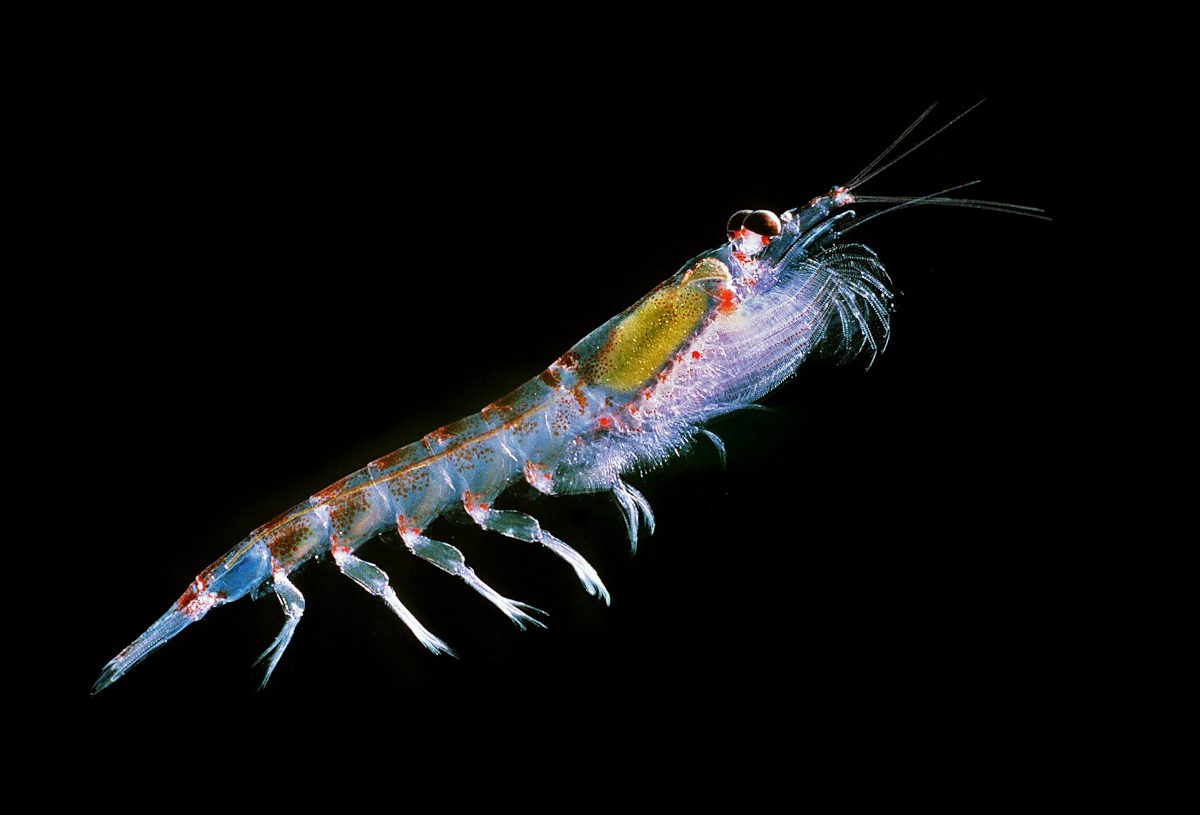
A new project launched on 1 November aims to protect the Southern Ocean ecosystem by focusing on Antarctic krill, a keystone species. Rising ocean temperatures are causing the krill’s habitat to shrink meaning it is now essential to understand how they are adapting to climate change, say the researchers.
To study how the animal is being impacted by the Anthropocene, the KRILLGUARD researchers have developed ‘DNA probes’ to identify important genes within the krill’s sequenced genome.
While krill are just a few centimetres long, their genome is enormous, as the Natural History Museum’s website explains – it’s one of the longest animal genomes sequenced to date, at 16 times longer than that of a human.
It has been one of the more challenging genomes to sequence, as a result, with this work only reaching completion in 2023. The reason for its long length remains an enigma, and is a result of repeated DNA sequences, the purpose of which remain unclear.
The KRILLGUARD researchers have developed DNA probes intended to identify important genes within the krill’s sequenced genome. As part of the project, they aim to target 10,000 gene sequences, including those associated with the krill’s response to temperature.
They will then compare historic specimens in the Natural History Museum and krill collected more recently by the British Antarctic Survey to see how these genes have changed over the past century. This will hopefully reveal how the species is responding to the Anthropocene.
“While the DNA in historic collections is degraded due to its age, genetics isn’t all about DNA,” explains Dr Matt Clark, a Research Leader at the Natural History Museum and senior member of the KRILLGUARD team. “To fit inside cells, DNA is wrapped around histone proteins, which are a bit like rosary beads on a necklace. When a gene is on, that section of DNA opens up so that the cell can use it to make proteins, and when it’s closed, it’s wrapped more tightly.”
“We’re interested in seeing if, based on the pattern of degradation, we can see where these proteins were, as this will tell us which genes were on and off at the time of death. By building up data from the past 100 years, we should be able to see how krill gene expression has changed.”
Conservation clues
Clark has explained the significance of the project in a press release. “It’s hard to overstate just how important Antarctic krill are to the ecosystem. As many as 10% of them are fed on by whales alone, while many more are eaten by everything from sea birds to squid.
“As cold-water specialists, krill are vulnerable to the effects of the warming Southern Ocean. We hope that by improving our understanding of their genetics, we can find out more about their populations and support decisions to conserve this vital species.”
The species is among the most numerous animals on earth. As well as being an important food source, krill play a key role in the carbon cycle removing up to 40 million tonnes annually. They also have considerable commercial importance: the krill fishing industry has an annual catch value exceeding $200 million.
The project will also be researching whether the species is comprised of distinctive groups as opposed to one large population surrounding Antarctica. This means that certain subpopulations which may be fished in open waters might be the ones better adapted to higher temperatures. If this is the case, krill’s ability to adapt to rising ocean temperatures might be hampered by removing the genes that enable this evolution.
KRILLGUARD will run a one-day workshop at the NHM, bringing together representatives of regulatory bodies responsible for marine life preservation to share the findings of the project.






